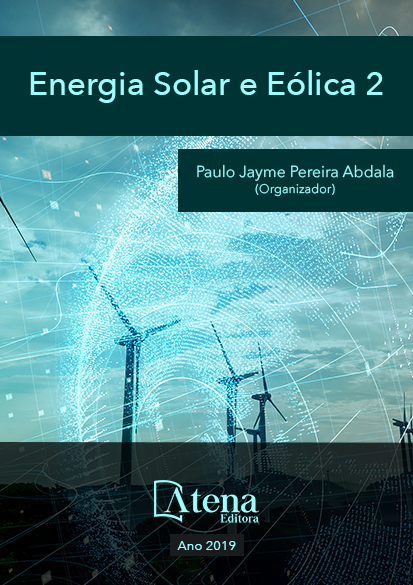
IMPLANTAÇÃO E AVALIAÇÃO DE DESEMPENHO DE DOIS GERADORES FOTOVOLTAICOS CONECTADOS DIRETAMENTE NO BARRAMENTO C.C. DO LABORATÓRIO DE SISTEMAS HÍBRIDOS/MINIRREDES (GEDAE/UFPA)
Este trabalho discorre sobre o
processo de implantação de dois geradores
fotovoltaicos conectados ao barramento de
48 Vc.c. do Laboratório de Sistemas Híbridos/
Minirredes localizado no Grupo de Estudos e
Desenvolvimento de Alternativas Energéticas
(GEDAE). Para tanto, são descritos os principais
objetivos e componentes do Laboratório.
As informações do processo de montagem,
instalação e comissionamento dos subsistemas
introduzidos são também aqui apresentadas
de forma sucinta. Os resultados dos ensaios
operacionais mostram a produção, perdas, e
eficiências de cada subsistema. Avaliando-se os
resultados obtidos, verificam-se alguns valores
abaixo do esperado, como, por exemplo, a
eficiência dos controladores com valores de
aproximadamente 90 % (sob condições de
carregamento acima de 20 %) e as Performance
Ratio dos subsistemas, com valores um pouco
abaixo de 80 %. Sombreamentos parciais,
tensões de entrada dos controladores de carga
e a dispersão de parâmetros entre módulos
são alguns fatores que podem justificar tais
resultados.
IMPLANTAÇÃO E AVALIAÇÃO DE DESEMPENHO DE DOIS GERADORES FOTOVOLTAICOS CONECTADOS DIRETAMENTE NO BARRAMENTO C.C. DO LABORATÓRIO DE SISTEMAS HÍBRIDOS/MINIRREDES (GEDAE/UFPA)
-
DOI: 10.22533/at.ed.6741922018
-
Palavras-chave: Sistemas Fotovoltaicos, Sistemas Híbridos de Energia, Minirredes.
-
Keywords: Photovoltaic Systems, Hybrid Energy Systems, Mini-grids.
-
Abstract:
This work discusses the process of implantation of two photovoltaic
generators connected to the 48 VDC bus of the Laboratory of Hybrid Systems/Mini-grids
located in the Group of Studies and Development of Energy Alternatives (GEDAE).
Therefore, the main objectives and components of the Laboratory are described.
The information about the process of assembly, installation and commissioning of
the introduced subsystems are also briefly described. The results of the operational
tests show the production, losses, and efficiency of each subsystem. Evaluating the
results obtained, it is verified that there are some values lower than expected, such
as the efficiency of the controllers with values of approximately 90 % (under loading
conditions above 20 %), and the performance ratio of the subsystem with values a little
below 80 %. Partial shading, input voltage of the load controllers and the dispersion of
parameters between modules are some factors that may justify such results
-
Número de páginas: 15
- Jorge Augusto Leal Corrêa


